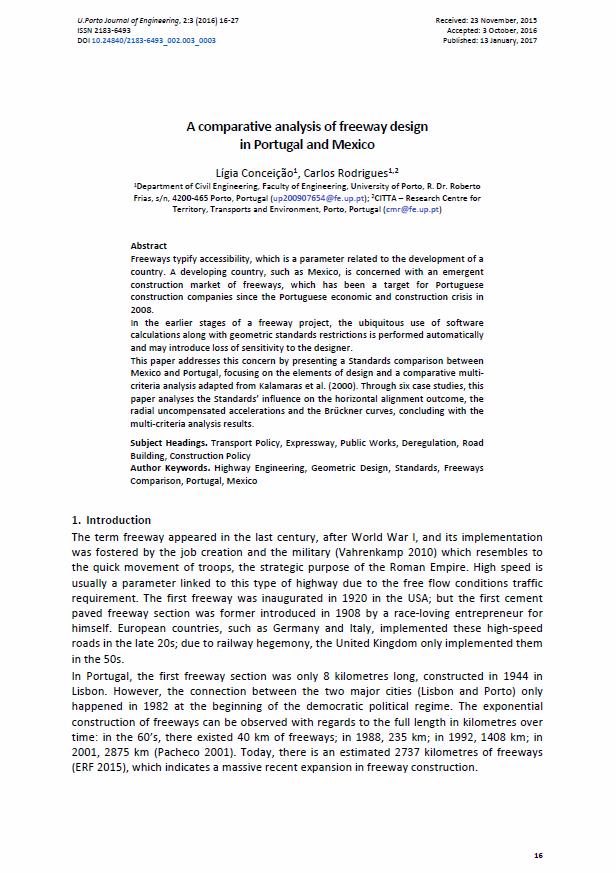A Comparative Analysis of Freeway Design in Portugal and Mexico
Main Article Content
Abstract
Freeways typify accessibility, which is a parameter related to the development of a country. A developing country, such as Mexico, is concerned with an emergent construction market of freeways, which has been a target for Portuguese construction companies since the Portuguese economic and construction crisis in 2008.
In the earlier stages of a freeway project, the ubiquitous use of software calculations along with geometric standards restrictions is performed automatically and may introduce loss of sensitivity to the designer.
This paper addresses this concern by presenting a Standards comparison between Mexico and Portugal, focusing on the elements of design and a comparative multi-criteria analysis adapted from Kalamaras et al. (2000). Through six case studies, this paper analyses the Standards’ influence on the horizontal alignment outcome, the radial uncompensated accelerations and the Brückner curves, concluding with the multi-criteria analysis results.
Downloads
Article Details
Authors who publish with this journal agree to the following terms:
- Authors retain copyright and grant the journal right of first publication with the work simultaneously licensed under a Creative Commons Attribution License that allows others to share the work with an acknowledgement of the work's authorship and initial publication in this journal.
- Authors grant the journal the rights to provide the article in all forms and media so the article can be used on the latest technology even after publication and ensure its long-term preservation.
- Authors are able to enter into separate, additional contractual arrangements for the non-exclusive distribution of the journal's published version of the work (e.g., post it to an institutional repository or publish it in a book), with an acknowledgement of its initial publication in this journal.
- Authors are permitted and encouraged to post their work online (e.g., in institutional repositories or on their website) prior to and during the submission process, as it can lead to productive exchanges, as well as earlier and greater citation of published work (See The Effect of Open Access).

